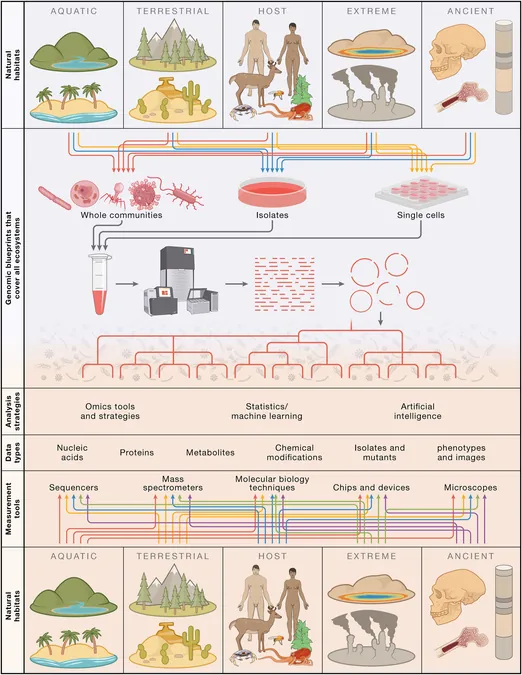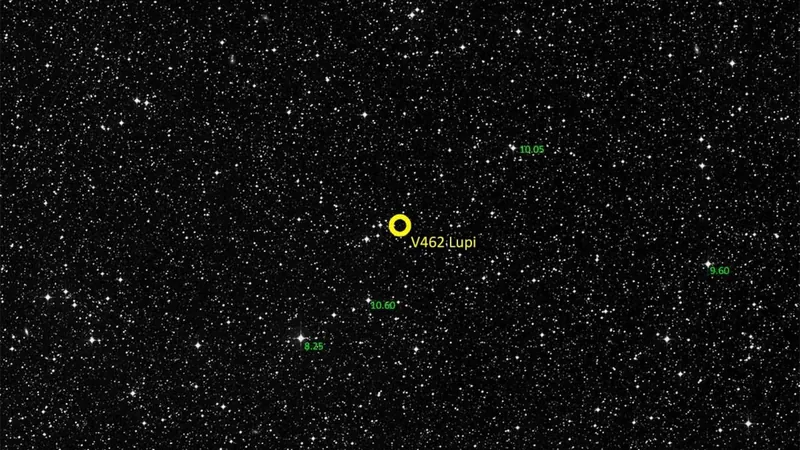
The Microbial Revolution: How Science is Unveiling the True Power of Tiny Life Forms
2024-09-25
Author: Yu
Introduction
In an age where global challenges loom large, computer scientist A. Murat Eren—also known as Meren—believes that the field of microbiology is set to play a pivotal role in shaping our future. In an insightful interview, he elaborates on the remarkable strides that microbiology has achieved and its potential to address the pressing issues facing our planet.
Microbes: Architects of Life
Historically, microbes have been perceived negatively, often branded as the culprits behind illnesses and poor hygiene. But is this reputation justified? Meren argues emphatically: “Not at all!” He emphasizes that microbes are not just troublemakers; they are the unfathomable architects of life. These tiny organisms are responsible for producing much of the oxygen we breathe and are crucial in nutrient cycling, helping maintain the delicate balance of ecosystems that sustain life as we know it. Essentially, they function as the guardians of planetary health.
Advancements in Microbial Research
The evolution of perspectives on microbial life has been marked by groundbreaking advancements in technology. Meren highlights a shift from studying isolated organisms in laboratory settings to exploring vibrant microbial communities thriving in their natural habitats. This transition has unveiled an astounding complexity and richness within these communities, which inhabit practically every ecosystem on Earth, from oceans to forests to our own bodies.
A New Era for Microbiology
In a landmark review article published in the journal Cell—celebrating its 50th anniversary—Meren and his colleague Jillian Banfield from UC Berkeley argue that microbiology is rapidly emerging as one of the foremost branches of science. The new era of microbiology, they suggest, positions microbes as indispensable allies in tackling some of humanity's most daunting challenges, particularly in biotechnology and medicine.
Applications of Microbiology
The applications of microbiology are vast. Meren points to exciting developments, such as discovering genes from environmental microbes that can edit human and plant genomes, producing advanced antibiotics, and even creating enzymes capable of breaking down plastics. However, he insists that for us to fully exploit the genetic genius of these microorganisms, a paradigm shift in research funding and education is essential.
Ecosystem-Level Approaches
Significant global questions, such as how to sequester more carbon in soil or reduce methane emissions from livestock, require comprehensive, ecosystem-level approaches. Sometimes, Meren argues, it is more insightful to observe natural processes than to conduct tightly controlled, small-scale experiments. Nature itself can serve as an excellent teacher.
Interdisciplinary Collaboration in Microbiology
The modern microbiology landscape is defined by its heavy reliance on data. It necessitates interdisciplinary collaboration, bridging fields like computer science, molecular biology, ecology, and physics. This collective effort is vastly enriched by the introduction of machine learning and artificial intelligence, which has empowered scientists to predict protein structures and develop innovative solutions in drug discovery.
Viruses: A New Understanding
Among the most thrilling revelations in recent years is the evolving understanding of viruses. Once dismissed as parasitic entities, viruses are now acknowledged as a significant force in ecosystems; they impact everything from microbial metabolism to animal behavior. The discovery of giant viruses with genomes surpassing those of some bacteria has opened up new areas of exploration in microbiology.
Discoveries in Genetic Structures
Moreover, Meren discusses newly identified genetic structures like plasmids, which lie outside of typical chromosomal frameworks. These genetic elements can confer crucial advantages, such as antibiotic resistance, to their bacterial hosts, although much about their diversity in natural environments remains unexplored. Recent findings even categorized certain virus-like elements as “Borgs” and "obelisks," expanding our understanding of microbial life.
Conclusion
In summary, the realm of microbiology is advancing at an unprecedented pace, driven by an increasingly diverse and skilled cohort of scientists. The complexity of microbial life is a reminder of our place in nature and the power that these tiny organisms hold in safeguarding life on Earth. Prepare to witness a microbial revolution that could redefine everything we thought we knew about life itself!





 Brasil (PT)
Brasil (PT)
 Canada (EN)
Canada (EN)
 Chile (ES)
Chile (ES)
 Česko (CS)
Česko (CS)
 대한민국 (KO)
대한민국 (KO)
 España (ES)
España (ES)
 France (FR)
France (FR)
 Hong Kong (EN)
Hong Kong (EN)
 Italia (IT)
Italia (IT)
 日本 (JA)
日本 (JA)
 Magyarország (HU)
Magyarország (HU)
 Norge (NO)
Norge (NO)
 Polska (PL)
Polska (PL)
 Schweiz (DE)
Schweiz (DE)
 Singapore (EN)
Singapore (EN)
 Sverige (SV)
Sverige (SV)
 Suomi (FI)
Suomi (FI)
 Türkiye (TR)
Türkiye (TR)
 الإمارات العربية المتحدة (AR)
الإمارات العربية المتحدة (AR)